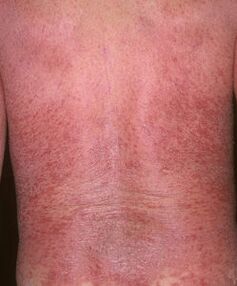People who face this skin disease for the first time, who have very unpleasant symptoms, want to know what psoriasis is and how to get rid of this disease.This is a disease that mainly affects the upper layer of the epidermis and its appendages: nail plate and bed, hair.According to statistics, psoriasis affects about 4% of the entire world population.In addition, the disease is more common at a young age: from 18 to 23 years.
There are many diseases similar to psoriasis, so it is important to know the symptoms in order to choose the right treatment.

In general, you should not treat yourself with this disease, because psoriasis develops quickly and can cause serious complications.A visit to a dermatologist is the only right decision if you find signs of the disease.
Species
There are many types of this skin disease.When classifying psoriasis, the nature of the rash, the severity of the course, and the location of the lesion are taken into account.There are the following main types of psoriasis:
- Plaque psoriasis (common).This is the most common type of disease, occurring in 85% of all patients.It is characterized by the presence of gray or silvery white plaques raised on the surface of the skin, which are easily peeled off.Vulgar Psoriasis is another name for this form of the disease.
- Guttate psoriasis.The destructive elements in this type of disease resemble drops or dots from red to purple.
- Pustular psoriasis.The worst form of skin disease.It is characterized by the presence of pustules on the body - vesicles filled with clear and uninfected fluid.As the disease progresses, the fluid becomes purulent.
- Psoriatic nail damage (onychodystrophy).The symptoms of psoriasis of this form affect the nail plate and the area around it: the shade of the nail changes, spots appear on its surface, the skin around the bed thickens, the plate breaks and crumbles.
- Arthropathic psoriasis.This disease is characterized by inflammation of small joints.This form of psoriasis most often leads to disability.
- Inverse psoriasis (fold or reverse).This disease affects skin folds in the groin area, in the inner thighs, armpits, and under the mammary glands (in women).
- Palmoplantar psoriasis.With the development of this form of the disease, all the characteristic symptoms begin to appear in the legs and hands.In severe cases, the disease affects the nails and other areas of the body.
- Seborrheic psoriasis.With this form, the rash is localized on the head, face, and back.
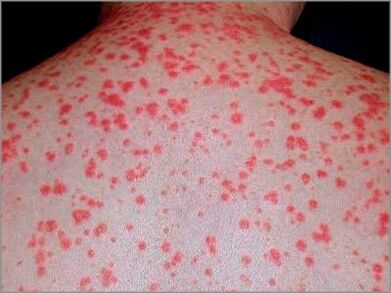
Disease symptoms
What is psoriasis like?How not to confuse with other skin diseases?In the early stages of the disease, the following signs of psoriasis occur:
- the appearance on the skin of pink, red or bluish papules, symmetrically located in certain areas of the body;
- general weakness;
- chronic fatigue;
- depression or apathy.
Gradually, the rash merges into a plaque - a scaly formation that is easy to remove.The area of inflammation grows towards the edge.
At this stage of psoriasis, there are signs that can help distinguish this disease from other skin diseases.If you scrape the scale, you can see the phenomenon of the psoriatic triad, which is formed by the following symptoms:
- Stearin Stain: After scraping the plaque, a silvery-white scale is separated, resembling stearin shavings;
- Terminal Film: At the site of the scraped formation, a very thin shiny film remains, which covers the papule;
- "Bloody dew": At the site of the removed terminal film, bleeding may appear, which occurs as a result of injury to the subcutaneous vascular network.
Symptoms of psoriasis vary depending on the specific stage of the disease and the season.In most patients, the manifestation of psoriasis worsens in winter.The "summer" form of the disease is relatively rare, as the patient's condition improves under the influence of ultraviolet radiation.
How does psoriasis manifest itself in different stages?Overall, there are 3 stages of disease progression.
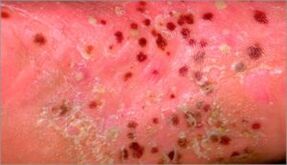
- In the progressive stage, new rashes constantly appear, and existing plaques increase in size.The patient feels severe itching, the skin peels all the time.
- What does psoriasis look like in the stationary stage?During this period, the growth of papules stops.Small folds are observed in the plaque area.There is still intense itching.
- In the regressing stage, the plaque begins to disappear, the peeling disappears, and the itching stops tormenting.Pigmented areas may appear at the site of formation.
Some types of psoriasis have their own symptoms.
For example, when the scalp is affected, plaques resembling dandruff appear first.In this case, only the skin suffers;The condition and growth of hair is not affected by this disease.From the head, the rash spreads to the area behind the ears, neck, and forehead.
The occurrence of psoriasis on the palms and feet is accompanied by thickening of the skin and the appearance of cracks.In the early stages of the disease, pustules with the form of transparent contents, which gradually become purulent.Later, scars appear at the site of such a formation, causing discomfort and pain during physical activity (working with hands, walking).In the future, the disease can be transmitted to the back of the hands and fingers.
Psoriasis of the nails has the following description: First of all, the plate becomes covered with small indentations, reminiscent of needle marks, changes color, and begins to flake and splinter.The tissue around the nail becomes thick and inflamed.
The main reason
The pathogenesis of psoriasis has not been fully studied until now.Scientists have put forward several theories as to why this disease occurs.There are two main causes of psoriasis.
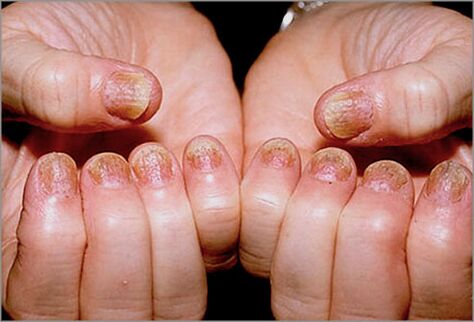
- The cause of this disease is damage to the immune system.Cells designed to protect the body from bacteria and viruses enter the upper layer of the epidermis, where they produce substances that trigger the inflammatory process.Because of that, skin cells quickly divide, and the affected area thickens.This theory is supported by studies of psoriatic plaques, which show large accumulations of immune cells.
- Psoriasis is a skin disease caused by impaired division and maturation of epithelial cells.As a result of this pathology, diseased skin cells are attacked by immune cells.
The development of psoriasis is influenced by several factors.The risk of disease increases if the body is affected by several of the following conditions at once.
- Have dry and thin skin.Experts state that those with thick, oily and moist skin rarely suffer from psoriasis.This is due to the structural characteristics of the epidermis and the protective function of sebum.
- Excessive love of cleanliness.An unreasonable desire to always keep the body clean, too often using soap and wipes injures the skin and reduces its protective properties.
- Bad habits.When smoking and drinking alcohol, the condition of the epidermis worsens: subcutaneous blood circulation and tissue nutrition are disrupted.
- Negative factors from outside.According to statistics, skin diseases appear more often in those who are in frequent contact with detergents, household chemicals, alcohol solutions, etc.
- Medicines.Chronic use of certain medications, for example, antidepressants, anticonvulsants, can cause psoriasis symptoms.
- Infectious diseases.Often, pathology occurs immediately after diseases caused by fungi or Staphylococcus.
- Climate change.It happens for the development of psoriasis, it is enough to move to a different climate zone.
- Skin injuries.Constantly wearing uncomfortable clothes with rough seams or low-quality shoes, the habit of scratching the same area can cause the first symptoms of psoriasis to appear.
- Pressure.Both psychological and physical (for example, prolonged hypothermia) shock to the body can precede the onset of the disease.
- Severe eating disorder.The course of the disease can be complicated by the abuse of sweet foods, carbonated drinks, citrus fruits, smoked meats, and salty foods.
- Genetic predisposition.Is it possible to inherit psoriasis?According to scientists, the genes responsible for the activity of the immune system are disease carriers.That is why the disease is transmitted from parents to children.
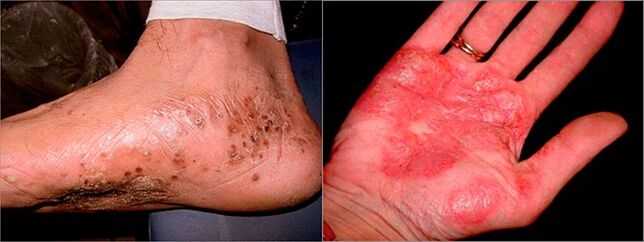
Life of Psoriasis Patients
Although psoriasis is not a contagious disease and cannot be spread through physical contact with the patient, many patients consider themselves excluded from society, which is why they experience severe psychological discomfort.
The biggest problem is the presence of rashes on the head, ears and face. More than half of those affected always focus on their appearance and fear condemnation and public rejection by society, because psoriasis often looks like lichen.When the disease progresses, a person limits communication with people.Only a quarter of psoriasis patients do not experience stress because of their own appearance.
The disease also causes severe physical discomfort.Persistent itching and burning limits the patient's ability to work, interferes with proper rest, often causes insomnia, and interferes with exercise.Psoriatic arthritis adds joint pain to the unpleasant symptoms.
Psychological anxiety combined with physical discomfort can lead to severe depression, and some patients also experience social phobia.The long-term and expensive treatment of this disease also has a negative effect on the patient, also takes strength and interferes with his socialization.
Why is psoriasis dangerous?
In the early stages, this disease causes a person discomfort related to the manifestation of symptoms: itching, burning, peeling.
If psoriasis is not treated, it becomes advanced, which is dangerous to the health and even the life of the patient.
In many cases, the following dangerous complications develop:
- pathological changes occur in metabolic processes;
- Heart function worsens, there is a risk of stroke, myocarditis;
- There are disturbances in kidney and liver activity;
- Affected joints (often finger phalanges, elbows, knees);
- Affected mucous membranes: eyes, gastrointestinal tract, bladder;
- As a result of severe psoriasis, the brain and nervous system are affected;
- Potentially debilitating men;
- Due to the spread of plaque throughout the skin, the respiratory function of the skin and the activity of sweat and sebaceous glands are disturbed;
- Thermoregulation is disturbed, which leads to inflammation of the epidermis, and this can cause blood poisoning and, as a result, death.
As a result of severe disease can be erythroderma.
This complication occurs in only 2% of all patients.In the early stages, it is characterized by the appearance of bright red lesions on the skin, reminiscent of burns.Over time, scales appear in the area, which peels off in large layers.The skin in this area becomes hot and very sensitive.Other symptoms also appear: feeling of tightness, constant itching, brittle nails, severe hair loss, enlarged lymph nodes.
If you find signs of psoriasis, you should immediately contact a dermatologist.Formulation of diagnosis is based on external examination of the skin and nails.Additional tests, as a rule, are not prescribed.If the patient complains of joint pain, x-rays and blood tests are taken to rule out other types of arthritis.
Only a doctor can make the correct diagnosis and decide how to treat psoriasis.
Treatment methods
It should be remembered immediately that psoriasis cannot be completely cured.
Winston Churchill also said: "I will erect a monument made of pure gold to the person who can learn everything about psoriasis and find an effective treatment for this disease."
External setup
Whatever the cause of psoriasis, first of all, the doctor prescribes local medicines that help relieve unpleasant symptoms.First, non-hormonal lotions, ointments and creams are used, which contain tar, oil, zinc or medicinal herbs.In most cases, such drugs help to forget the unpleasant symptoms of psoriasis after 3-4 weeks of use.
If non-hormonal ointments are ineffective, hormone-based drugs for psoriasis are used.They must be used strictly as prescribed by the specialist, in case of not exceeding the dose or increasing the treatment.With the help of hormonal ointment, you can quickly forget what it is - psoriasis, but there is a high risk of serious side effects.
Even the latest local drugs must be used in combination with other drugs.In addition to ointments, enterosorbents are prescribed, which will remove toxic substances from the tissues, and immunosuppressants, which are designed to reduce the reaction of the immune system.Treatment is impossible without taking a vitamin complex, especially vitamins B, A, C, D.
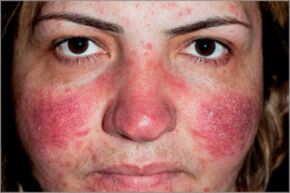
Physiotherapy
This method of psoriasis treatment is widely used in every stage of the disease.Procedures such as bathing, phototherapy, and ultraviolet irradiation give excellent results.
New methods of treating this disease include cryotherapy, electrosleep, hirudotherapy, and PUVA therapy.
In advanced forms of the disease, the use of ultraviolet light has a beneficial effect.Thanks to this method, in just 20-30 procedures, damaged cells are destroyed, peeling is eliminated, damaged skin is restored, and the immune system returns to normal.Before carrying out the full procedure, a trial session is carried out, exposing a small area of the patient's body to the rays.If the skin reaction is normal, the full course is prescribed.In the summer, patients are offered to continue ultraviolet treatment under the natural rays of the sun.
Traditional medicine
Folk remedies for any type of psoriasis can only be used in consultation with a doctor.
It is important to understand that severe psoriasis symptoms cannot be eliminated at home.
Traditional recipes only help to soften the skin and temporarily relieve itching.The following products received the best reviews among patients.
Tar:
- In the first days of the onset of the disease, apply tar to the affected area with a cotton swab for 10 minutes, then wash with tar soap;
- On day 4-5, increase the duration of the procedure to 40 minutes;
- The full course of treatment is 12 days;
- It is better to use tar before going to bed, because the smell disappears completely at night.
Celandine:
- Through a meat grinder some bushes of Celandine, plucked;
- Squeeze juice from the resulting mass;
- Lubricate each affected area with juice;
- Repeat the procedure until the external signs of the disease disappear completely.
Eggs and vinegar:
- Prepare the ointment by beating 2 eggs and 20 ml of vegetable oil;
- Add 10 ml of acetic acid to the mass;
- Lubricate rashes and plaques with products produced every night;
- Course of treatment: 3-4 weeks.
Herbs:
- Grind 20 g of St. wort flowers.John, 20 g of Celandine root, 10 g of marigold flowers and 10 g of propolis into a paste (it is better to do this in a clay bowl);
- Add 20 ml of vegetable oil to medicinal herbs;
- Apply the prepared product to the affected area three times a day;
- You can stop the treatment as soon as the visible signs of the disease disappear.
Elderberry infusion:
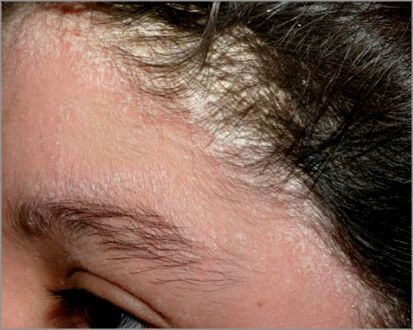
- Pour 0.5 liters of boiled water into 10 g of elderberry leaves and flowers;
- Leave the infusion at room temperature for half an hour;
- Take 80 ml of infusion every time itching increases after eating;
- Course of treatment - 10 days.
Diet
Whatever treatment method for psoriasis is used, without following a special diet, it is not possible to achieve much improvement.To adjust the diet, it is better to contact a specialist who will create a menu taking into account the individual characteristics of certain patients.To ensure that the entry "psoriasis" no longer appears in medical history, you should know and follow the general rules of nutrition for patients.In case of this disease, the following should be excluded from the menu:
- Any nut;
- Citrus;
- smoked meat;
- spices;
- salinity;
- spicy dishes;
- fatty foods;
- alcohol;
- blue cheese.
If your medical history includes a diagnosis of psoriasis, you need to make sure that your diet is balanced.Every day there should be food on the table that supplies the body with all the necessary substances.
It is very important to get fatty acids, which are contained in sufficient quantities by all types of fish.
Recommendations for patients
To forget for a long time what kind of disease torments you, no matter what type of psoriasis you have, follow these important rules during and after treatment:
- Use gentle skin care: Wash with warm water and neutral products, do not rub your body with a towel, but gently remove it;
- Give regular cosmetics for a while, avoid using products that are new to you;
- When doing housework, wear protective gloves;
- limit contact with allergens;
- Wear clothes and shoes made of natural fabrics without rough seams;
- Drink at least 1.5 liters of clean water every day.
You need to understand that it is impossible to cure psoriasis completely.However, if you choose the right way to fight this disease, you can get rid of unpleasant symptoms and achieve stable remission.
Keep your skin clean, watch for slight changes in its condition, and if you have suspicious symptoms, contact a specialist.Taking care of your own body will keep you healthy and beautiful.To follow the latest information and current news, subscribe to our articles and be sure to share with friends on social networks.See you again!
This article has exclusively educational, encyclopedic and informational functions.It is necessary to get your doctor's approval before using the tips and suggestions described in this article.You can't bury yourself!
























